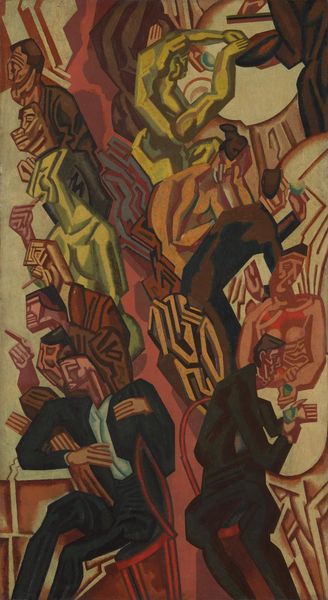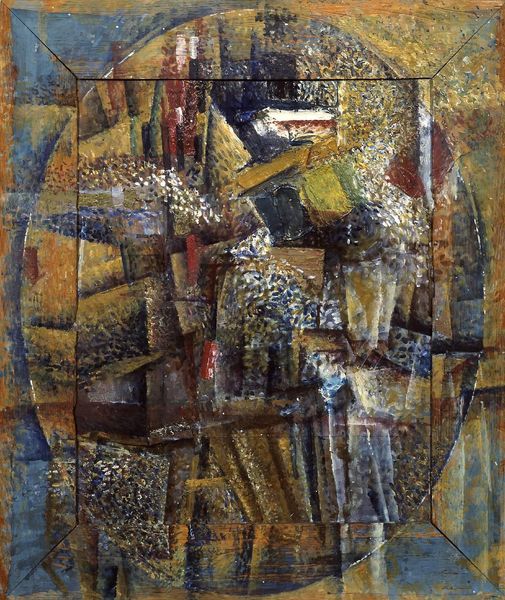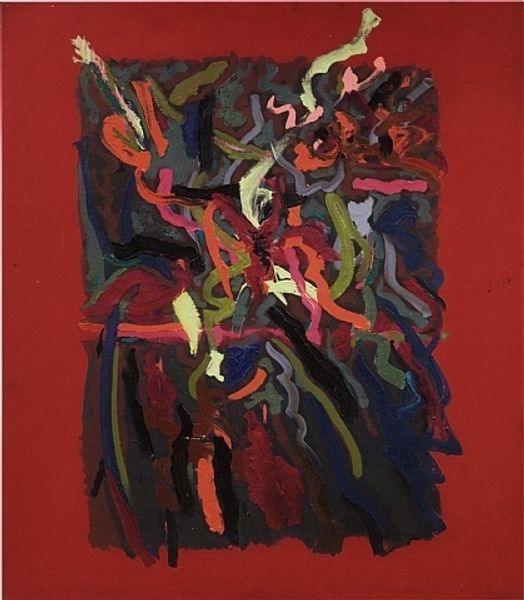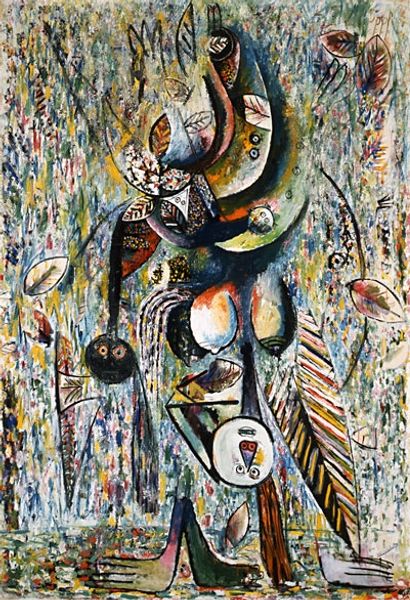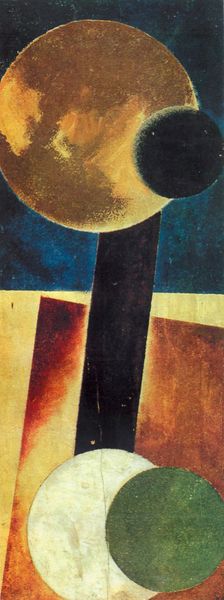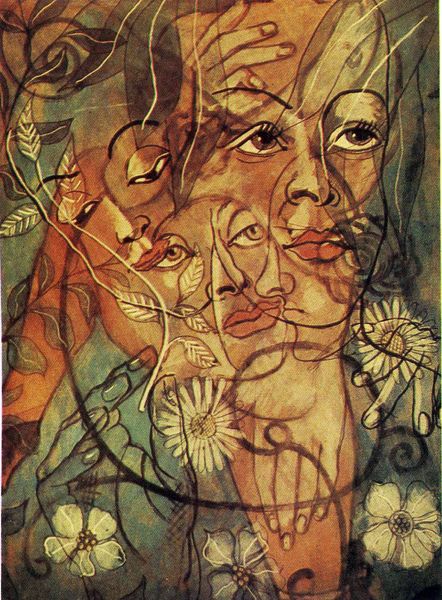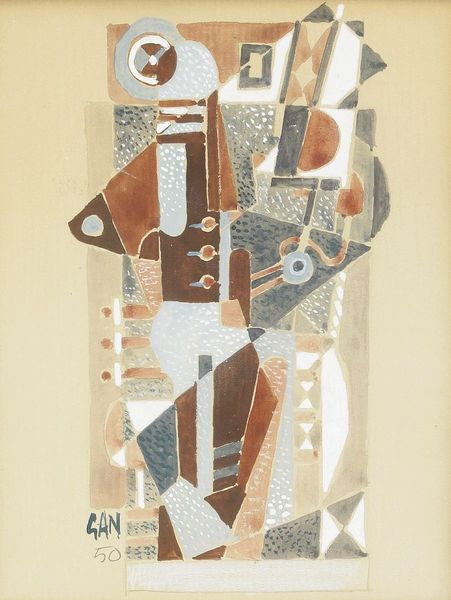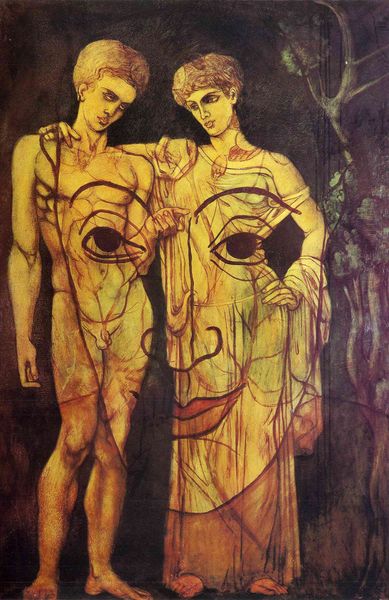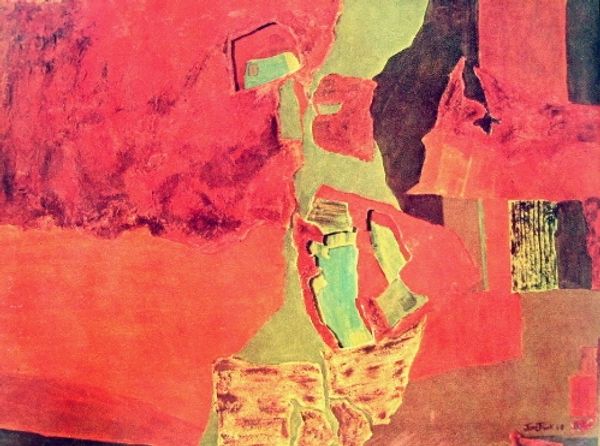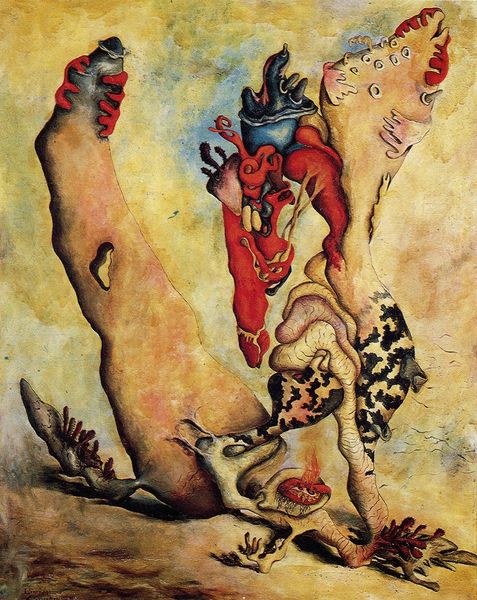
painting, paper, watercolor
#
portrait
#
abstract painting
#
painting
#
figuration
#
paper
#
form
#
handmade artwork painting
#
oil painting
#
watercolor
#
expressionism
#
geometric-abstraction
#
abstraction
#
line
#
modernism
#
expressionist
Copyright: Public domain
Editor: So, this is Paul Klee's "A Young Lady's Adventure" from 1921. It's an oil and watercolor painting on paper, and I find its earthy tones and abstract figure quite intriguing. What's your take on this piece? How do you interpret this work in its historical context? Curator: Klee's piece, made just after WWI, speaks volumes about the shifting position of women in society. Look at how the figure is constructed—geometric shapes, fragmented, yet also presented with a degree of agency symbolized by the red arrow. Editor: Agency, that’s interesting! The red arrow certainly seems directional. But is she really "adventuring?" What would that mean in 1921? Curator: Exactly! Consider the period—women's suffrage movements were gaining momentum. Klee might be suggesting a break from traditional constraints. The figure isn't confined; she navigates a space of abstract possibilities. The slightly masked facial features? Could symbolize the facelessness of women at the time, wanting more recognition, perhaps? Editor: Hmm, the masked face—I hadn't thought about that! I was so focused on the playful shapes and the title’s implied narrative. Do you think the “adventure” is about personal liberation then, more than literal exploration? Curator: Precisely! Think about how post-war expressionism gave artists the language to dissect inner experience alongside social critique. Klee doesn't present a realistic image of woman; he presents a landscape of burgeoning self-discovery and redefinition. It is a deliberate composition; from her torso shape and downwards, all the colours look desaturated suggesting she is at a threshold in life. Editor: That makes a lot of sense. Now I'm also wondering what role abstraction plays. Curator: Abstraction enables Klee to bypass societal expectations and instead get at universal and ambiguous, perhaps timeless issues surrounding identity and experience. Instead of seeing a "lady," we're invited to engage with a construction of womanhood—one of movement, potential, and resistance. Editor: Okay, I'm definitely seeing the painting in a new light now. Thank you. Curator: Of course. Looking beyond the formal aspects and really digging into the ‘why’ allows us to recognize the complex layers Klee embedded within "A Young Lady's Adventure," prompting further analysis of its themes related to identity, gender and power.
Comments
No comments
Be the first to comment and join the conversation on the ultimate creative platform.

